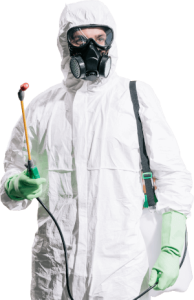- (647) 224-7378
- 24/7
- service@torontopestcontrol.ca

Beetle Pest Control
Beetle Pest Control Treatment & Removal Services
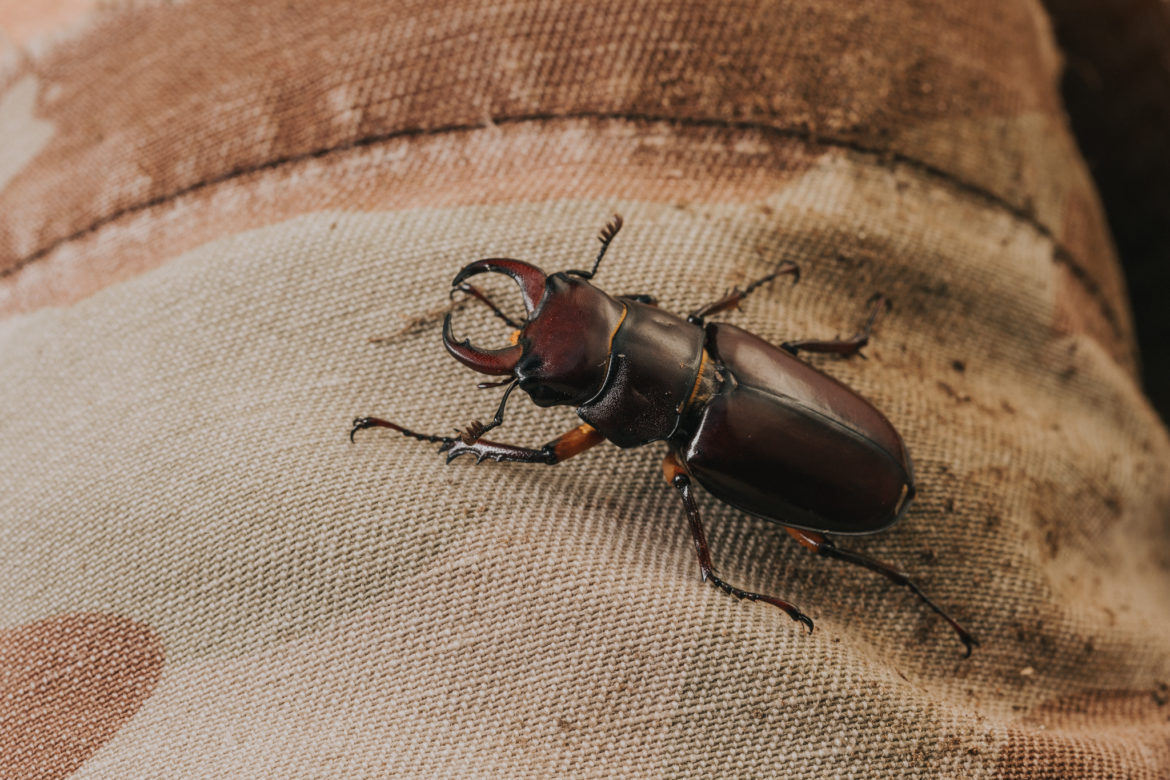
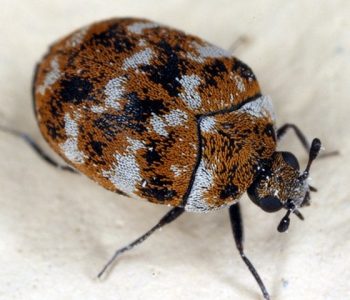
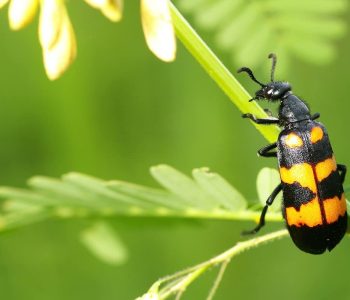
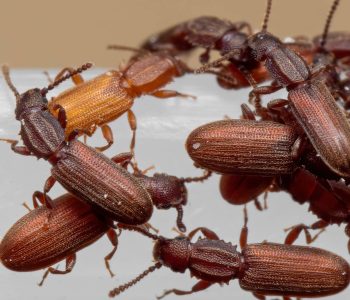
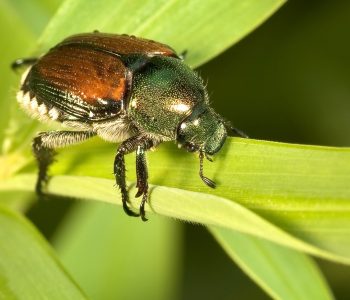
Beetle Pest Control in Ontario
Dealing with beetle infestations requires specialized expertise, and Provincial Pest Control is here to provide effective solutions. Our comprehensive beetle pest control services cover a wide range of beetle species, ensuring your property remains pest-free. From cucumber beetle control to managing Japanese beetles and carpet beetles, our tailored treatments address diverse infestations. Explore organic and chemical control options for sustainable solutions, and trust Provincial Pest Control for professional and efficient beetle pest control services in your area.
Common Types of Beetles Control Methods
A. Cucumber Beetle Control
- Chemical and Organic Methods:
– Chemical treatments and organic solutions are employed to combat cucumber beetles. Chemical methods may involve insecticides, while organic approaches use natural compounds.
- Pest Control for Cucumber Beetles:
– Tailored strategies focus on eradicating cucumber beetle populations, considering factors like beetle species, lifecycle, and environmental impact.
- Organic Cucumber Beetle Control:
– Utilizing natural substances and methods to manage cucumber beetles without synthetic chemicals, ensuring an eco-friendly approach.
B. Flea Beetle Control
- Chemical Control of Flea Beetles:
– Application of insecticides or chemical solutions targeting flea beetles to minimize their presence and impact on crops.
- Organic Control for Flea Beetles:
– Implementing natural remedies and substances to deter or eliminate flea beetles while maintaining an environmentally conscious approach.
- Flea Beetle Biological Control:
– Leveraging natural predators or biological agents to manage flea beetle populations, contributing to sustainable pest control.
C. Japanese Beetle Control
- Pest Control for Japanese Beetles:
– Tailored solutions addressing the unique challenges posed by Japanese beetles, considering their lifecycle and habits.
- Japanese Beetle Biological Control:
– Implementing natural enemies or biological agents to regulate Japanese beetle populations, offering an environmentally friendly approach.
- Japanese Beetle Chemical Control:
– Utilizing targeted chemical interventions to address Japanese beetle infestations and protect vegetation.
D. Lily Leaf Beetle Control
- Controlling Lily Leaf Beetles:
– Implementing measures to limit the impact of lily leaf beetles on plants, considering factors like breeding habits and vulnerable stages.
- Lily Beetle Larvae Control:
– Addressing the larvae stage of lily beetles, often a critical aspect of effective control, with methods suited to the specific lifecycle.
- Lily Red Beetle Control:
– Focusing on controlling the vibrant red adult lily beetlesto safeguard plants and prevent damage.
E. Carpet Beetle Control
- Pest Control Carpet Beetles:
– Employing strategies to manage and eliminate carpet beetle infestations, safeguarding textiles and stored items.
- Carpet Beetle Pest Control Near Me:
– Localized solutions addressing carpet beetle issues in proximity, ensuring prompt and effective control.
- Organic Pest Control for Carpet Beetles:
– Utilizing natural and eco-friendly methods to control carpet beetles without the use of harsh chemicals.
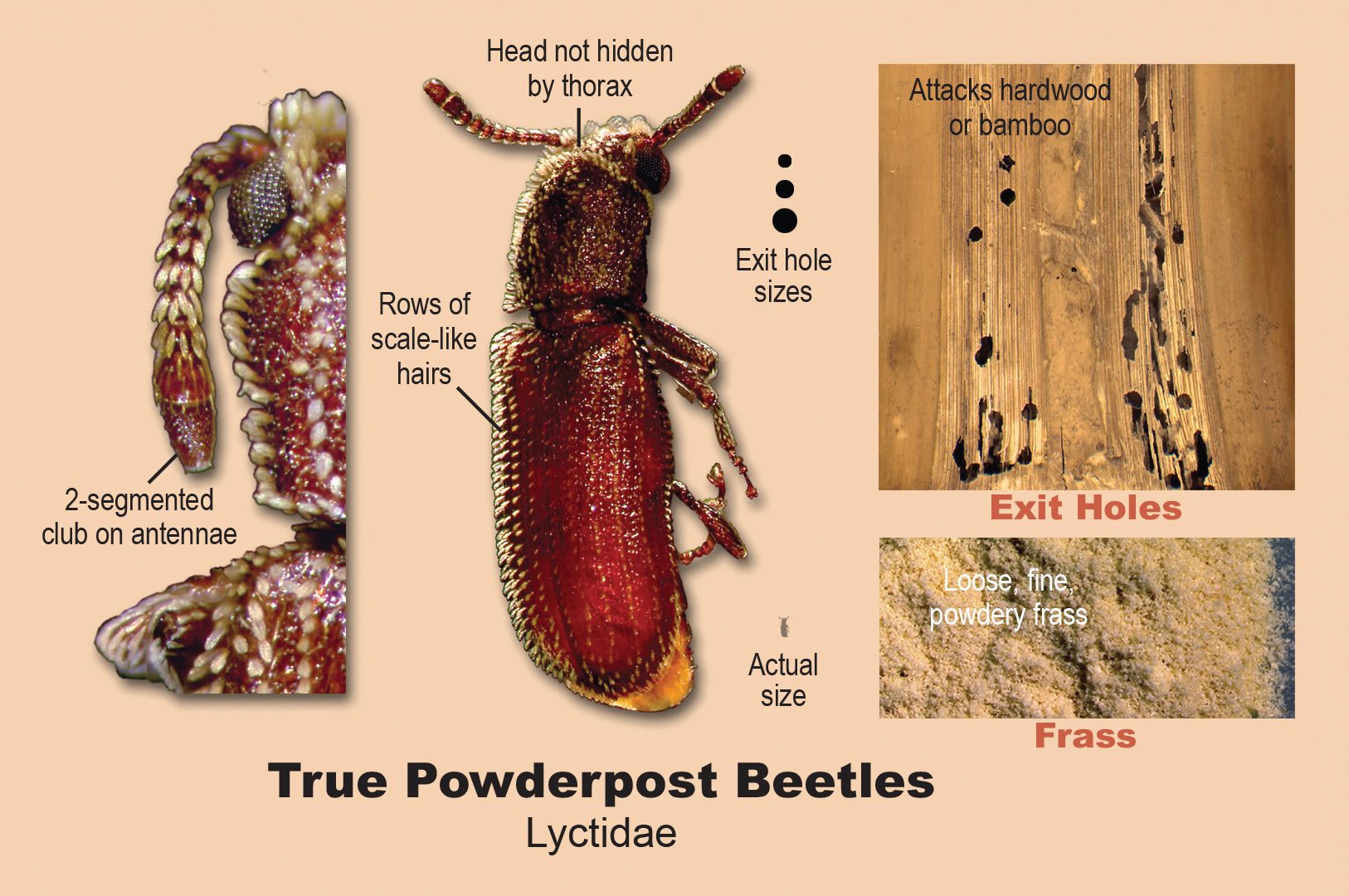
How do I know if I have an powderpost beetle infestation?
Detecting a powderpost beetle infestation requires careful observation and attention to certain signs. Here’s how you can determine if you have a powderpost beetle infestation:
- Tiny Holes in Wood Surfaces:
Powderpost beetles create small, round exit holes in wood surfaces as they emerge. These holes are typically 1/32 to 1/16 inches in diameter. Check wooden structures, furniture, or flooring for the presence of these tiny exit holes.
- Fine Powder Residue (Frass):
The name powder post comes from the fine, powdery frass that the beetles produce as they tunnel through wood. Look for this sawdust-like material around the exit holes or accumulating on surfaces beneath infested wood.
- Damaged Wood and Galleries:
Inspect the interior of wooden items for signs of damage. Powderpost beetles tunnel through wood, creating intricate galleries as they feed. If you notice extensive damage or a network of tunnels within the wood, it may indicate an infestation.
- Emergence Holes in Furniture:
In the case of furniture infestations, examine joints, corners, and other concealed areas for emergence holes. Powderpost beetles prefer unfinished or exposed wood, so these areas are more likely to be affected.
- Audible Sounds:
In some cases, you may hear a soft, ticking sound coming from infested wood. This sound is produced by the feeding activities of powderpost beetle larvae within the wood.
- Seasonal Patterns:
Powderpost beetles are more active in warmer temperatures. If you observe an increase in exit holes or frass during the summer months, it could indicate an active infestation.
- Check Vulnerable Items:
Regularly inspect and monitor items made of hardwood, softwood, or bamboo, as these materials are more susceptible to powderpost beetle infestations. Items such as antique furniture, wooden artifacts, and structural components are common targets.
If you suspect a powderpost beetle infestation based on these signs, it’s advisable to consult with a professional pest control service. They can conduct a thorough inspection, confirm the presence of powderpost beetles, and recommend an appropriate treatment plan to address the infestation.
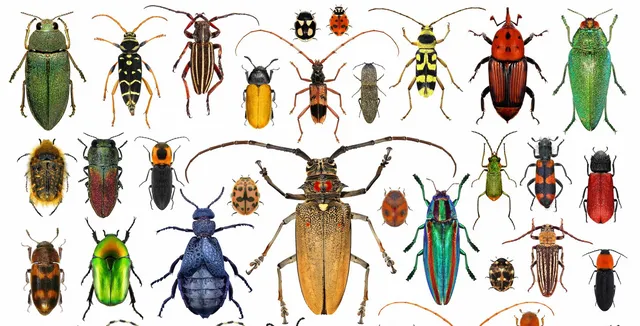
TYPES OF BEETLES IN TORONTO, ONTARIO
Exploring the diverse world of beetles reveals a wide array of species, each with unique characteristics. In Toronto, where beetle infestations can be a concern, understanding different types is crucial. Here are some notable beetle species and considerations for effective beetle control in Toronto:
- Ladybugs:
– While ladybugs are generally beneficial, certain species can become pests. Effective lady beetle control involves understanding the specific species and implementing targeted solutions.
- Ground Beetles:
– These beetles are often beneficial in controlling other pests. However, if their population becomes problematic, ground beetle pest control strategies may be necessary.
- Dung Beetles:
– Vital for ecological balance, dung beetles help break down organic matter. Natural habitats usually keep their populations in check, but in certain scenarios, dung beetle control might be considered.
- Weevils
– Weevils are notorious for damaging stored grains and crops. Implementing effective weevil control measures is crucial to prevent agricultural losses.
- Scarab Beetles:
– Some scarab beetles, like the Colorado Potato Beetle, can pose significant threats to crops. Scarab beetle control strategies are essential for protecting agricultural yields.
- Click Beetles:
– Click beetles are known for their unique mechanism to right themselves when overturned. While they are generally harmless, extensive populations may require click beetle control
- Fireflies (Lightning Bugs):
– Fireflies are a delight in outdoor settings, but excessive use of pesticides can harm their populations. Implementing firefly-friendly pest control practices is essential.
- Stag Beetles:
– Stag beetles are fascinating but can be sensitive to habitat changes. Preserving natural environments and avoiding unnecessary disturbances are vital for stag beetle conservation.
- Longhorn Beetles:
– Longhorn beetles can cause damage to trees. Understanding their behaviors is crucial for effective longhorn beetle control.
- Rhinoceros Beetles:
– Recognizable for their horn-like structures, rhinoceros beetles are generally harmless. However, rhinoceros beetle control may be necessary if they become pests.
- Carpet Beetles:
– Carpet beetle pest control is essential for preserving textiles and preventing damage to clothing and household items.
Understanding the habits and characteristics of each beetle species is essential for effective pest management. Whether it’s cucumber beetle control, japanese beetle control, or addressing infestations of other types, a tailored approach is key to successful beetle pest control.
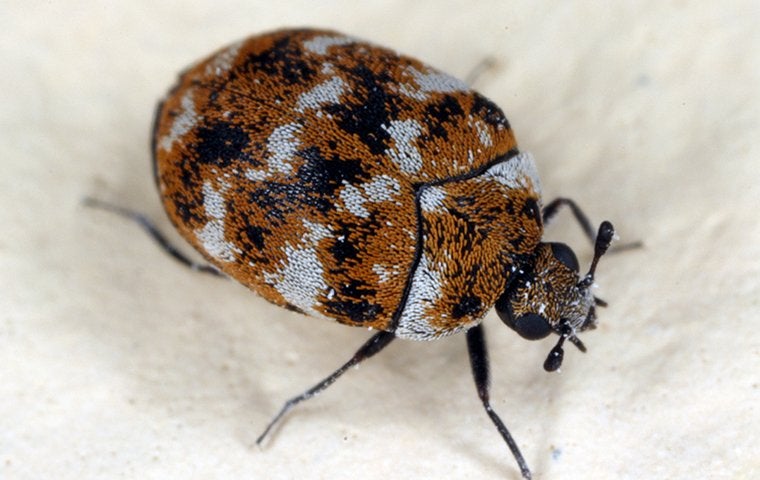
What are Varied Carpet Beetles?
Key Characteristics:
Dietary Habits:
Varied Carpet Beetles are notorious for feeding on a diverse array of materials within homes, including carpets, clothing, upholstery, and even stored food products.
Lifecycle:
Their life cycle comprises four stages—egg, larva, pupa, and adult. The larvae, often the most damaging stage, are voracious feeders causing harm to textiles and organic materials.
Destructive Larvae: Varied Carpet Beetle larvae thrive on keratin and other proteins, making natural fibers like wool, silk, and feathers particularly vulnerable. Infestations may lead to irreparable damage to fabrics and belongings.
Prevalence: These beetles are commonly found in homes, museums, and natural history collections, where their destructive feeding behavior poses a threat to artifacts and specimens.
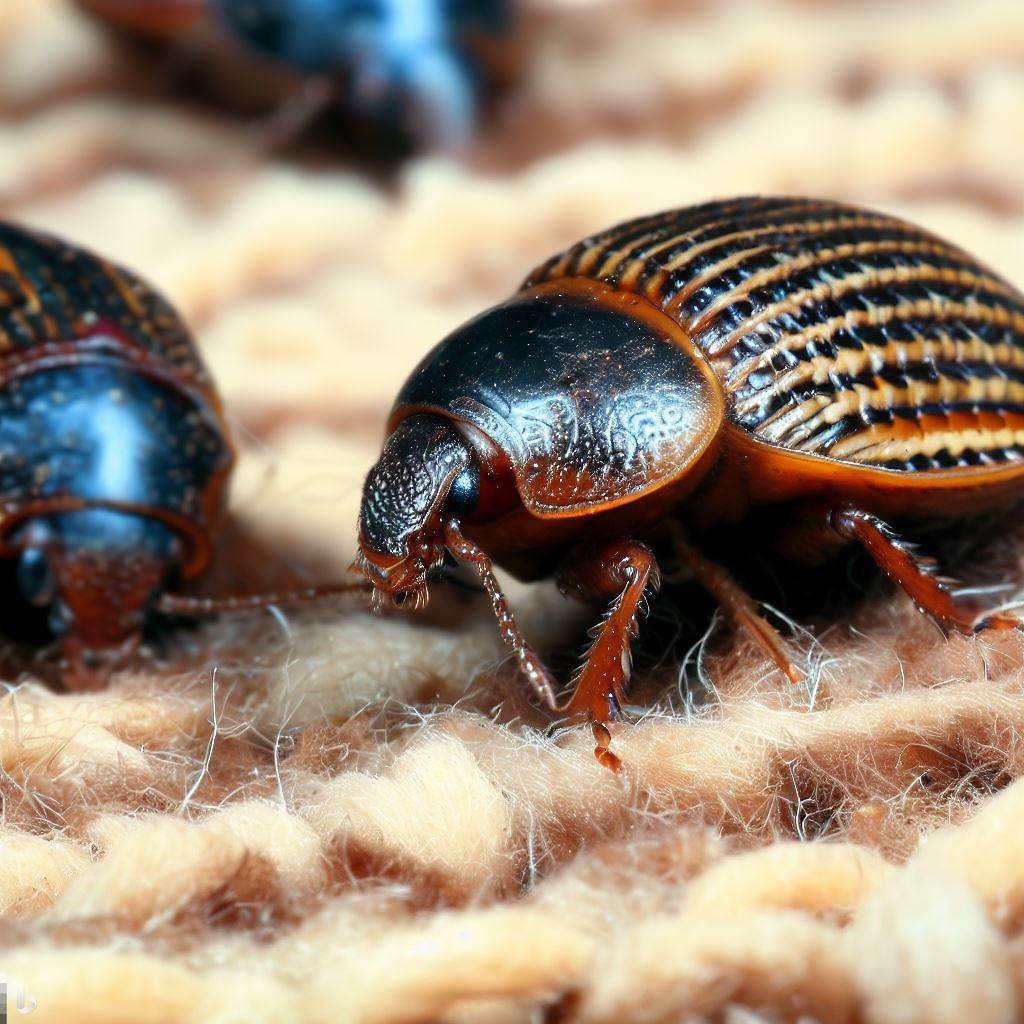
Identifying Varied Carpet Beetles in Toronto, Ontario
Color:
Varied Carpet Beetles exhibit a diverse color palette. They typically feature a combination of black, brown, and various mottled patterns on their elytra (wing covers). The patterns may include white, yellow, and orange scales, creating a distinctive appearance.
Size:
These beetles are relatively small, with adults measuring between 1.7 to 3.5 mm in length. The larvae, which are often more damaging, are elongated and covered in bristle-like hairs.
Legs:
Varied Carpet Beetles have six legs, a characteristic feature common to all insects. The legs are relatively short and robust, adapted for crawling.
Antennae:
Their antennae are clubbed or knobbed at the tips, a distinctive feature that aids in differentiating them from other beetle species. The clubbed antennae are a key characteristic of the family Dermestidae, to which Varied Carpet Beetles belong.
Shape:
The overall body shape of Varied Carpet Beetles is oval and slightly flattened. Their bodies are covered with tiny scales that give them a somewhat fuzzy or velvety appearance. This is more noticeable in the larvae, which are covered in bristle-like hairs.
Region:
Varied Carpet Beetles are found throughout Toronto, Ontario, and beyond. They are common household pests that can infest homes, museums, and natural history collections. Their adaptability to indoor environments makes them prevalent in urban areas.
Habitat and Behavior:
Feeding Habits: Varied Carpet Beetle larvae are notorious for their destructive feeding habits. They feed on a variety of organic materials, including carpets, clothing, upholstery, and stored food products.
Lifecycle: The beetle undergoes a complete metamorphosis with egg, larval, pupal, and adult stages. The larvae, often the most damaging stage, are responsible for the destruction of textiles.
Varied Carpet Beetles (Anthrenus verbasci) are small, common household pests known for their distinctive patterned appearance and destructive feeding habits. These tiny beetles, typically measuring 1.7 to 3.5 mm in length, boast a varied color palette ranging from black and brown to mottled patterns of white, yellow, and orange scales.
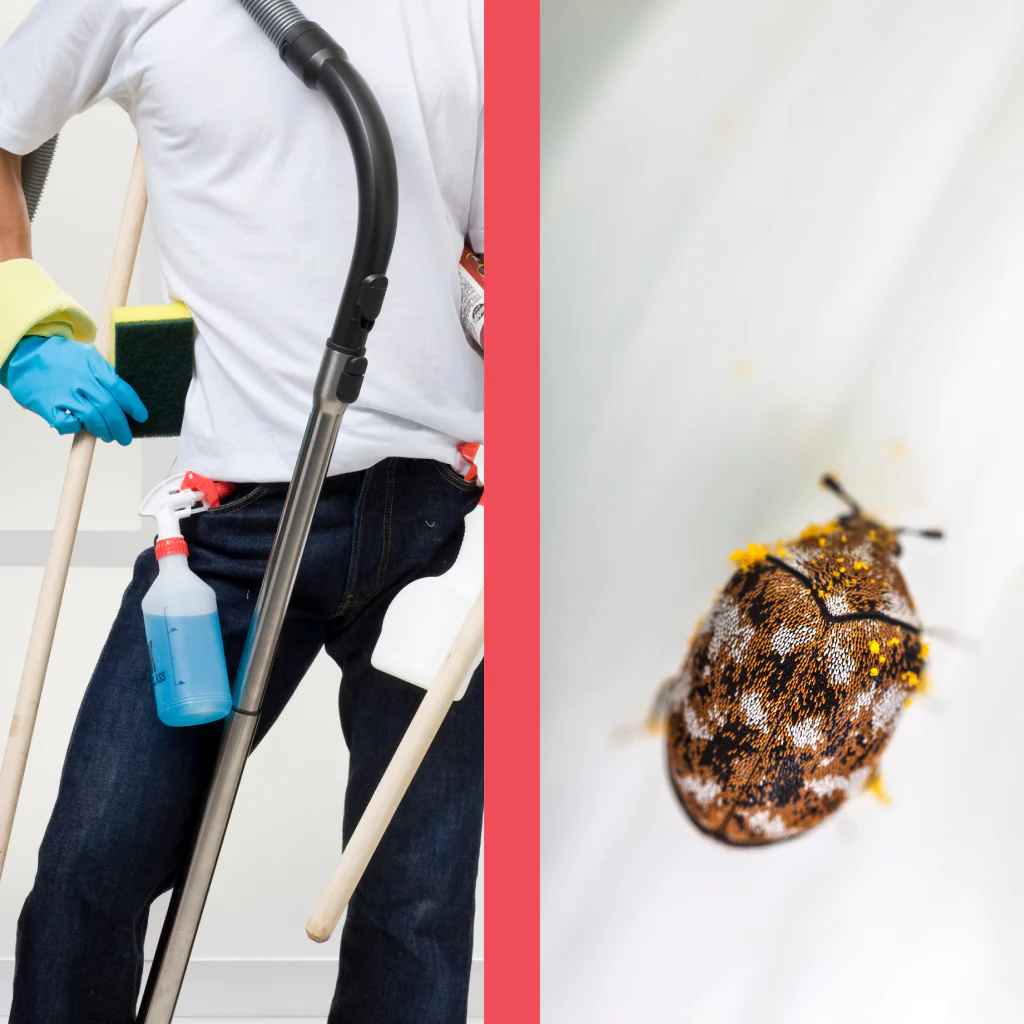
Black Carpet Beetle Extermination: Quick Solutions
- Identification:
– Color and Size: Quickly identify small, black oval beetles.
– Lifecycle: Understand egg, larval, pupal, and adult stages for effective targeting.
- Cleaning and Vacuuming:
– Thorough Vacuuming Focus on carpets, upholstery, and crevices to remove larvae and eggs.
– Remove Infested Items Discard affected textiles and stored foods promptly.
- Natural Repellents:
– Cedar and Essential Oils Utilize cedar blocks or essential oils like peppermint for natural beetle repellency.
- Chemical Treatments:
– Insecticides: Apply beetle-specific insecticides as directed, targeting affected areas.
– Professional Extermination:For severe infestations, consider professional pest control for thorough and targeted solutions.
- Storage Practices:
– Airtight Containers: Store clothing and linens in airtight containers to prevent reinfestation.
- Consult Professionals:
– Toronto Pest Control Services: Seek professional assistance for a thorough assessment and targeted solutions.
Swift action, including natural repellents, cleaning, and targeted treatments, ensures effective Black Carpet Beetle extermination, safeguarding your home and belongings. we have more pest removal services!
Services
A Free Inspection
Frequently Asked Question
For comprehensive beetle control, consider using organic methods such as organic control for cucumber beetles or organic control for flea beetles. You can also explore chemical options, like chemical control of flea beetles, for more targeted solutions.
Absolutely, opt for organic cucumber beetle control methods or explore pest control for Japanese beetles to address multiple beetle species affecting your cucumbers.
Explore various methods like japanese beetle biological control or japanese beetle control neem oil for effective and eco-friendly pest control Japanese beetles solutions.
The beetle pest control cost can vary. Contact us for a customized quote based on your specific needs, whether it’s for carpet beetles pest control services or controlling other beetle species.
Utilize lily beetle natural control methods or explore organic control for lily leaf beetles to safeguard your lilies from potential infestations.
